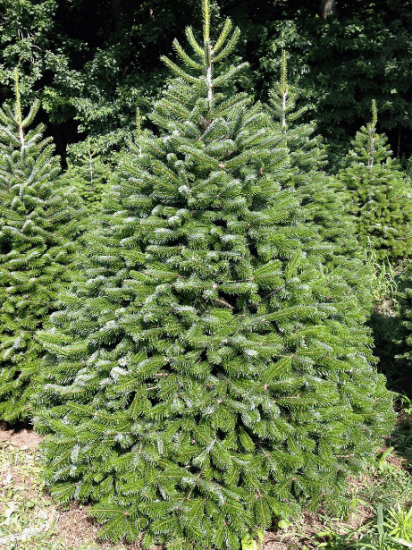Challenges of Growing Christmas Trees
Like the magic of the Christmas season, the humble Christmas tree is a gift that brings beauty and life to our homes. Burkholder has a big supply of Christmas trees this year, even though 2022 brought significant challenges for Christmas tree growers. Those challenges resulted in some places experiencing a shortage of fresh trees due to the supply chain and weather conditions in certain parts of the country. We will explore the challenges of growing Christmas trees this year, what the industry is facing, and where you can get a live, fresh Christmas tree this year.
Issues With Growing Christmas Trees
Over the past few years, the live Christmas tree industry faced several challenges, ranging from the supply chain to climate. One issue affecting many businesses across the United States is continuing freight/shipping/logistics/supply chain slowdowns. In addition, some places that sell Christmas trees, but purchase them from other sources, like farms, are experiencing issues with getting enough trees shipped to them in time. Another reason for a potential shortage is the climate and weather.
The summer of 2022 was arid, with many countries experiencing drought. These drought conditions significantly impacted plant development. Growing Christmas trees requires, patience, as trees take around ten years to mature and need specific soil conditions to thrive: if the soil is too wet, issues like root rot occur; if the soil is too dry, the trees can get stunted. Because of the dry summer earlier this year, Christmas tree farmers had to tap into other irrigation methods to keep their supply healthy. As a precaution, farmers often plant more trees than necessary to mitigate losing trees. However, the length and severity of this year’s drought may have resulted in limited Christmas tree stock.

Burkholder’s Christmas Trees
If you want a place to get Christmas trees, visit Burkholder’s Holiday Market. We have a large collection of live Christmas trees to purchase. This year, we will have a more extensive selection of live Christmas trees, including a new species and more small trees. While plenty of trees are available, you may be wondering which species to get. Different species of trees offer characteristics that some people may prefer while retaining the qualities of a good Christmas tree. Below are the different species we have available at our Holiday Market.

Fraser Fir
The Fraser fir is native to the Appalachian Mountains in the Southeastern U.S. The Fraser fir is one of the most popular species for Christmas trees. Named after Scottish botanist John Fraser, the tree has several characteristics that make it a good choice for a Christmas tree.
- Strong limbs to retain shape
- Soft, dark-green needles so your fingers will stay safe hanging the ornaments
- Mild, pleasant fragrance, which is good for people with allergy concerns
- Compact form and size for easy transportation
Turkish Fir
The Turkish fir makes an excellent choice for people looking for a more exotic Christmas tree. Turkish firs are native to a single region in the entire world, Mount Ida in northwestern Turkey, and have traits that make this species an increasingly popular choice for homeowners.
- Short, deep green needles that stick upward, revealing a bright, silvery underside and creating a flashy two-tone effect
- Short, deep green needles that stick upward, revealing a bright, silvery underside and creating a flashy two-tone effect
- A waxy texture to the needles helps restrict fragrances, which is good for those with allergies or sensitivities
- Sturdy branches give the tree a conical shape, with a dense foliage
Fraser-Balsam Fir
For those interested in the classic, traditional Christmas tree, look for a new tree we have available at our Holiday Market: the Fraser-Balsam fir. The Fraser-Balsam cross fir is a hybrid of the Fraser and Balsam fir trees, with the benefits and characteristics of both species.
- Shiny, waxier, dense needle coverage and retention
- Durable, sturdy branches and structure
- A nice fragrance, giving you a pleasant, festive aroma without being overpowering
Visit Burkholder for Christmas Trees & Holiday Gifts
If you and your family are hunting for that perfect Christmas tree this holiday season, visit our holiday market! Get festive holiday gifts and share family fun by roasting marshmallows around the fire and even getting an early visit from Santa. Visit our holiday page for special event dates, or contact us.

